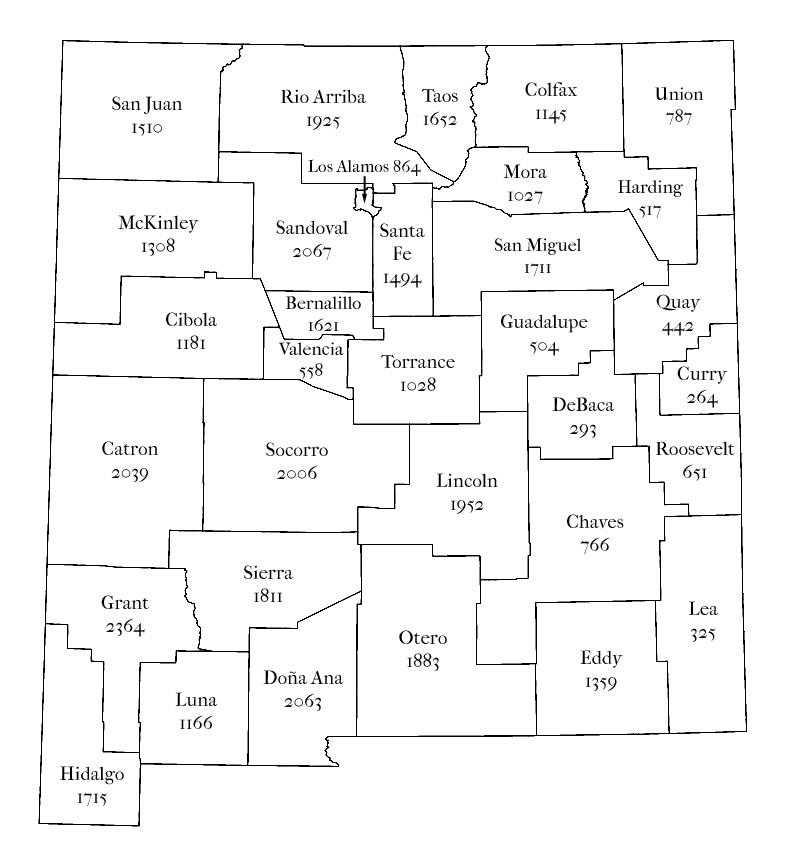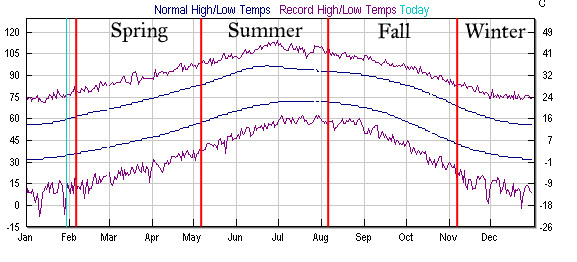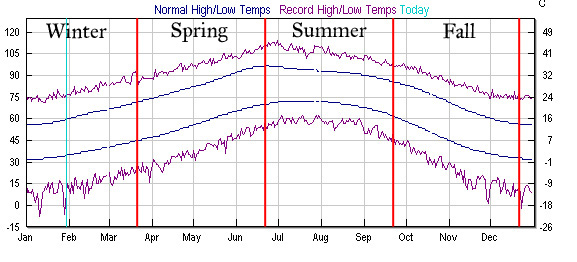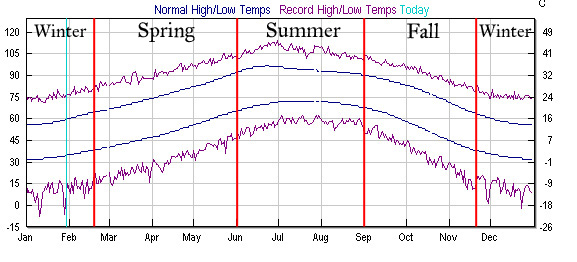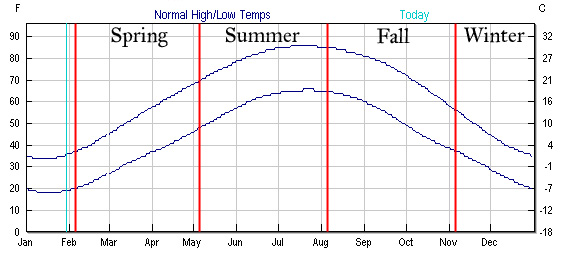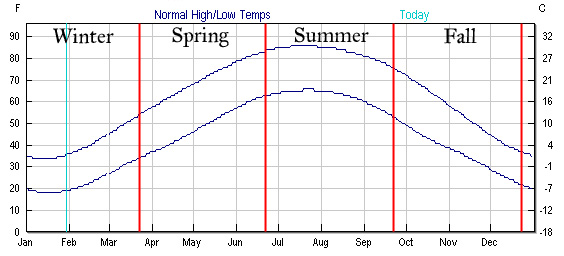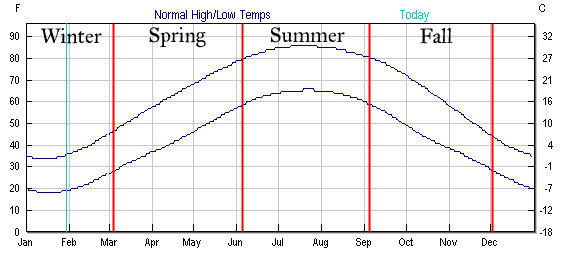I figure I’ll put some of the more interesting (to me, at least), articles from the old pseudo-blog on here as well. So, from 1 Nov 2008:
An entry for my own reference so much as anything else, descriptions of the various species, subspecies, and varieties named in the mustard genus Thysanocarpus, in alphabetical order. Only basionyms of taxa presently included in Thysanocarpus (i.e., no Athysanus) are listed.
First, the description of the genus by Hooker, 1829, Flora Boreali-Americana 1: 69.
29. THYSANOCARPUS. Nov. Gen.
Silicula obovata, plano-convexa, undique latissime marginato-alata, apice emarginata, unilocularis, evalvis, monosperma. Semen late obovatum, pendulum. Radicula inserticae dorsalis, obliqua et ad margines cotyledonum applicata.–Flores parvi, albi, racemosi. Siliculae pendulae.–Genus Tauscheriae affinis. An vere distinctum?
Thysanocarpus affinis Greene, 1901, Pittonia 4: 311-312.
Thysanocarpus affinis. Very erect, 1 to 1 1/2 feet high, simple below, parted above the middle into several suberect racemose branches; herbage glabrous, glaucous: lowest leaves not seen, the larger cauline 3 inches long, of narrow-lanceolate outline, with several pairs of very prominent subulate or often falcate-incurved teeth, the base slightly auricled, those of the flowering branches lance-linear, very saliently denticulate: petals very small, not exceeding the sepals, but stamens well exserted: silicles of strongly pyriform outline, small, unevenly crenate, never perforate, the scarious margin very narrow or obsolete, the whole body of silicle hirtellous.
Santa Catalina Island, California, March, 1901, Blanche Trask. The species has the foliage of T. ramosus of the same island and of others of the group, but in mode of growth this plant is at the opposite extreme, while the characters of the pods are very distinctive.
Thysanocarpus amplectens. Stem stoutish, simple and leafy below, with a few racemose branches at the middle, 12 to 20 inches high, glabrous throughout and very glaucous: lowest leaves unknown; cauline linear-lanceolate, remotely and retrorsely dentate, with very conspicuous sagittate lobes at base which clasp the stem: white petals shorter than the purple (white-margined) sepals; stamens scarcely exserted: pod nearly orbicular, glabrous, the body reticulate-venulose, the wing of 14 to 16 short rays and a regularly crenate hyaline margin, but no perforations.
Type collected by the writer in southwestern New Mexico, 16 April, 1880; referred by Asa Gray at the time to T. elegans, from which species its perfectly glabrous and strongly glaucous herbage effectually excludes it. It is really of the group to which T. laciniatus belongs, though its very conspicuously sagittate-clasping and merely dentate leaves, as well as its mode of growth, prevent its being confused with that species. I do not know how much of the Thysanocarpus materials from Arizona now extant in herbaria may be referable to this very distinct extra-Californian member of the genus.
Thysanocarpus conchuliferus Greene, 1886, Bulletin of the Torrey Botanical Club 13: 218.
Thysanocarpus conchuliferus.–Glabrous, 3–7 inches high, with many divergent branches; leaves linear, the lower cleft into narrow segments, the cauline auricled at base; racemes short and rather close; pods a line or more in length, cymbiform, the conduplicate margin sinuately parted into spatulate divisions, or the latter coherent above, leaving narrowly oblong perforations; style equalling the margin of the pod and commonly coherent with it; pedicels nearly divaricate or quite straight, twice as long as the pods; flowers not seen.
Common on mossy shelves and crevices of the high rocky summits and northward slopes of Santa Cruz Island. A most interesting new species, very remarkable in the character of its fruit; showing how nearly our American Thysanocarpus can approach the Asiatic genus Tauscheria and yet remain a perfectly valid genus, the very dissimilar Athysanus being excluded.
Thysanocarpus conchuliferus Greene var. planiusculus B.L.Rob., 1896, Synoptic Flora of North America 1(1): 113.
Var. planiusculus, Robinson, n. var. Fruit plano-convex or slightly concavo-convex, not perceptibly reticulated but hirsute upon both sides: pedicels 4 to 6 lines long.–Island of Santa Cruz with type, T. S. Brandegee, April, 1888.
Thysanocarpus crenatus Nutt. ex Torr. & A.Gray, 1838, A Flora of North America 1: 118.
4. T. crenatus (Nutt.! mss.): “petals about as long as the calyx; silicles orbicular-obovate, crenate, glabrous, slightly emarginate, membranaceously winged; the wing perforated; style not exserted; leaves linear-lanceolate, runcinately and remotely denticulate.
“St. Barbara, California, March–April.–Stem 12-14 inches high, branching above. Leaves an inch long; the lower ones somewhat hirsute. Silicles about half as large as in T. curvipes; the wing more or less perforated.” Nutt.
Thysanocarpus curvipes Hook., 1829, Flora Boreali-Americana 1: 69-70.
1. T. curvipes. (Tab. XVIII. A.)
Radix parva, annua, subfusiformis. Caulis solitarius, plerumque ramosus, erectus, 6-8-pollicaris ad pedalem, parce foliosus, inferne subpilosus. Folia plerumque radicalia, patentia, duas uncias longa, pinnatifida, hirsuto-scabra, laciniis brevibus, obtusis, basi attenuata. Caulinea remota, linear-oblonga, basi latiora, subsagittata, superiora sensim minora. Flores racemosi, parvi, ramos terminantes. Pedicelli floribus paululum longiores, graciles, glaberrimi, patentes, demum, fructiferi, insiguiter deflexi et elongati. Calyx: sepala aequalia, ovalia, convexa, glabra, erecto-patula. Petala minuta, lineari-oblonga, basi attenuata, integra, alba, sepalis breviora. Stamina 6, tetradynama: Filamenta filiformia, edentula: Antherae subglobosae. Germen brevissime stipitatum, obovatum, plano-compressum, lato-marginatum, alatum, apice emarginatum, stylo subaeque longo, demum, et videtur, deciduo teminatum. Stigma obtusum, parvum. Silicula dependeus, forma et structura fere omuino alatum, apice emarginatum, stylo subaeque longo, demum, et videtur, deciduo teminatum. Stigma obtusum, parvum. Silicula dependeus, forma et structura fere omuino germinis, sed estylosa, convexo-plana, utrinque subreticulata, vix uninervis, unlocularis, evalvix. Embryo flabus. Cotyledones suborbiculatae, plano-convexae: Radicula subaeque longa, insertione evidentissime dorsalis, sed obliqua et versus margines cotyledonum incumbens.
Hab. On moist ground, near the Great Falls of the Columbia. Fl. April, May. Douglas–I long hesitated whether or not I should unite this interesting plant with the genus Tauscheria of Dr. Fischer, with which it sufficiently accords in habit, and, in many respects, in the singular structure of the seed-vessel. In both the species of Tauscheria, however, of which I have excellent specimens from Dr. Fischer and Professor Ledebour, the silicula is truly cymbiform, the margin is curved inwards, and the extremity, instead of being broad and notched, as in Thysanocarpus, is narrow and elongated into a beak, like the narrow prow of a vessel. Its perfect embryo I have not been able to examine: but in our plant, this has always its radicle inserted at the back of one of the cotyledons, and then inclines obliquely, so that the greater part of its length is applied to the edge or margin of the cotyledons. In the figure here given, the seed did not occupy the whole of the cavity of the cell, as was the case with more fully ripe capsules, given to me by Mr. Douglas after the plate was engraved, and which, I believe, were produced by plants cultivated in the Garden of the Horticultural Society.
[note–my .pdf of Flora Boreali-Americana is at times difficult to read; the Latin probably has typos.]
Thysanocarpus curvipes Hook. var. cognatus Jepson, 1936, A Flora of California 2: 100.
Var. cognatus Jepson var. n. Herbage nearly glabrous, a little glaucous; blades of cauline leaves entire or nearly so; pods orbicular-elliptic, abruptly contracted to a shortly cuneate base, 3 lines long, not notched at apex or only slightly.–(Fere glaber, glauciusculus; folia caulina subintegerrima integerrimave; siliquae orbiculato-ellipticae, base breviter cuneata (lin. 3 longa) abrupte contractae, ad apicem fere integerrimae.)–Pine Log, South Fork Stanislaus River, A. L. Grant 702 (type); Lake Eleanor, Tuolumne Co., 4690 feet, A. L. Grant 1257.
Thysanocarpus curvipes Hook. var. eradiatus Jepson, 1925, A Manual of the Flowering Plants of California: 447.
1. T. curvipes Hook. Fringe-pod. Fig. 438. Slender, 1 to 1 1/2 ft. high, more or less pubescent or hirsute; cauline leaves linear or lanceolate, the lower dentate or denticulate; basal leaves often
narrowed at base to a petiole, commonly sinuate-pinnatifid, with triangular acute or acuminate lobes; pods obovate varying to round-obovate, pubescent or glabrous, 1 1/2 to 3 1/2 lines long, often very convex on one side; wing narrow, rather crowded with broad rays, entire.–Frequent in the open hill country of Cal., 100 to 5000 ft.: n to B. C. and Ida. Var. eradiatus Jepson n. var. Wing of pod membranous, without rays.–Deserts, Inyo Co. (Panamint Range, Jepson 7040, type) s. to the Colorado Desert.
Thysanocarpus curvipes Hook. var. involutus Greene, 1891, Flora Franciscana: 276.
1. T. curvipes, Hook. Fl. i. 69. t. 18 (1829): T. runcinatus, Hook.: Don. Dict. i. 196 (1831). A foot high or more, with few and rather strict racemose branches, or smaller and simple-stemmed; radical leaves in a rosulate tuft, pinnatifid, with short obtuse lobes or subentire, hirsute; cauline oblong- or linear-lanceolate, entire, sagittate-clasping: fr. obovate, seldom 2 lines wide, strongly concavo-convex, glabrous or slightly tomentose, the marginal rays broad, dilated above, rather crowded, with narrow diaphanous spots (rarely a few perforations) between them. Var. (1) involutus. Taller and more strict: fr. elliptical, only a line wide; rays nearly obsolete, the purplish subscarious margin closely involute all around; style (rather prominent in fl.) deciduous. Var. (2) pulchellus. T. pulchellus, F. & M. (1835). Radical leaves merely toothed: pods densely tomentose; the wing rather broader.–The type of this species has not been found south of Mt. Shasta, except in Humboldt Co., Marshall, Miss Bush. The first variety is from Sonoma Co.,
Bioletti, and this may not improbably be found distinct. Var. 2 is our most common form in middle Calfornia.
Thysanocarpus curvipes Hook. var. longistylus Jepson, 1925, A Manual of the Flowering Plants of California: 447.
1. T. curvipes Hook. Fringe-pod. Fig. 438. Slender, 1 to 1 1/2 ft. high, more or less pubescent or hirsute; cauline leaves linear or lanceolate, the lower dentate or denticulate; baasl leaves often narrowed at base to a petiole, commonly sinuate-pinnatifid, with triangular acute or acuminate lobes; pods obovate varying to round-obovate, pubescent or glabrous, 1 1/2 to 3 1/2 lines long, often very convex on one side; wing narrow, rather crowded with broad rays, entire.–Frequent in the open hill country of Cal., 100 to 5000 ft.: n to B. C. and Ida. […] Var. longistylus Jepson n. var. Style 1/2 to 3/4 line long (in the species 1/8 to 1/5 line long), persistent.–Sierra Nevada, 3000 to 3500 ft., from Mariposa Co. to Tulare Co. (Jepson, type).
Thysanocarpus curvipes Hook. subsp. madocarpus Piper, 1906, Flora of Washington. Contributions from the United States National Herbarium 11: 306.
1a. Thysanocarpus curvipes madocarpus subsp. nov.
Differs from the species in having its pods glabrous instead of puberulent.
From field observations this seems worthy of subspecific rank. While both forms may occur close together, yet so far as my observations go a particular colony of plants is of one form of the other; the two do not occur mixed.
Thysanocarpus deppii Nutt. ex Torr. & A.Gray, 1838, A Flora of North America 1: 118.
2. T. elegans (Fisch. & Meyer): petals nearly twice as long as the calyx; silicles orbicular-obovate, membranaceously winged; the wing (often) perforated with holes, emarginate at the apex.
a. silicles glabrous; style conspicuously exserted.–T. elegans, Fisch. & Meyer, l.c.
b. silicles villous; style slightly exserted. Hook.! ic. t. 39. T. Deppii, Nutt. mss. T. n. sp. Fisch. & Mey. l.c. (without a name.)
g. silicles somewhat pubescent, wing not perforated; style not exserted.
California, Douglas! Deppe. (ex Fisch. & Meyer.)–Stem 12-18 inches high, branching, nearly glabrous, Leaves in b. lanceolate, sagittate, repandly toothed; in g. linear, the upper ones almost subulate and sagittate-clasping. Silicles 2 1/2 lines long; the winged margin perforated with a row of 12-14 oblong holes, or marked with thin diaphanous spots, the opaque coriaceous substance of the centre extending between them, and thus giving the silicle a radiated appearance.
Thysanocarpus desertorum A.Heller, 1905, Muhlenbergia 2: 47.
Thysanocarpus desertorum Glabrous, yellowish, especially in the inflorescence, maximum height 2 dm, branched from the base, the branches ascending, becoming somewhat racemose: leaves scattered, the lowest ones oblanceolate, about 3 cm. long, 4 or 5 mm. wide, sparingly runcinate-dentate, acute or acutish; those above smaller, nearly linear, not narrowed at the base, clasping but not auricled: pedicels 3 mm. long or less: flowers very small, the sepals obovate-oblong, white or yellowish with broad green midvein: petals a little shorter and narrower than the sepals: silicle plane or nearly so, orbicular, 3 mm. across, slightly reticulated, glabrous, minutely crenate but not perforate; the short style not exserted from the notch.
The type is no. 7681, collected April 14, 1905, on rocky hilltops near Randsburg, Kern County, growing under overhanging rocks.
Thysanocarpus elegans Fisch. & C.A.Mey., 1835, Index Seminum, quae Hortus Botanicus Imperialis Petropolitanus pro Mutua Commutatione Offert. Accedunt Animadversiones Botanicae Nonnullae 2: 51.
Th. elegans F. et M. Th. petalis calyce longioribus; siliculis glaberrimis ala foraminosa cinctis apice truncatis styloque exserto terminatis.–A Th. pulchello, quocum crescit et cui ceterum persimilis est, silicularum ala foraminibus numerosis latis uniseriatus pertusa facile dignoseitur.
[Exceedingly approximate translation: “Petals longer than the calyx; silique smooth and with perforate wings, apex truncate with the style much exserted terminally.–Similar to Thysanocarpus pulchellus, but the perforate wings of the siliques readily distinguish it.” Quoting from Jeremiah Johnson: “Now isn’t that easier than saying all that gibberish?”]
Thysanocarpus emarginatus Greene, 1896, Pittonia 3: 86-87.
Thysanocarpus emarginatus. Slender and low, much branched from the base, glaucous and also hispidulous, with scattered, spreading or deflexed white bristly hairs: cauline leaves all linear-lanceolate, entire, sessile but in no degree auricled or even dilated at base: flowers and radical leaves unknown: pedicels of fruit short, spreading, scarcely curved: fruit nearly orbicular, the body glabrous, with strong midvein and almost equally prominent transverse veinlets, the broad wing perfectly entire, scarious, abruptly and rather deeply emarginate at apex, wholly destitute of perforations and lacking even the usual radiating bundles of fibrous tissue.
Collected by the writer at the summit of Mt. Diablo, Calif., 20 June, 1892, and very erroneously referred, at the time, to T. laciniatus; from which it is distinguished not so definitely by its pubescence as by the remarkable character of the pods. In the structure of the wing of the fruit this species is equally removed from the group of the original species and from T. radians; but it has an ally in T. Palmeri of the far-distant Cedros Island.
[There is no species named Thysanocarpus palmeri; perhaps Greene was referring to Thysanocarpus erectus, see below.]
Thysanocarpus erectus S.Wats., 1876, Proceedings of the American Academy of Arts & Sciences 11: 124.
Thysanocarpus erectus. Smooth and leafy: leaves oblong to oblanceolate, an inch or two long, auricled at base, somewhat sinuate-dentate: flowers purple or rose-colored: fruiting pedicels erect: pod minutely pubescent, the wing of the fruit (still immature) without indication of nervation or perforation: style very short — Collected by Dr. E. Palmer on the western side of Guadalupe Island. Distinguished especially by its erect pedicels.
Thysanocarpus filipes Greene, 1900, Pittonia 4: 200-201.
Thysanocarpus filipes. Slender, branched from near the base and all the branches racemose: herbage scarcely glaucescent, deep-green: leaves of the stem (the lowest not seen) lanceolate, acuminate, sessile by a subhastate base: racemes dense: pods round-obvate, 1/4 inch long, on filiform pedicels of 1/4 to 1/2 inch, the whole body of the fruit very minutely hirtellous, only obscurely venulose, the rays about 12, for the most part united near the summit and forming elliptic infra-marginal perforations, the crenate diaphanous margin purplish: stigma included within a deep terminal notch.
Near Clifton, Arizona, Dr. Anstruther Davidson, 1899.
Thysanocarpus foliosus A.Heller, 1905, Muhlenbergia 2: 47-48.
Thysanocarpus foliosus About 5 dm. high, hirsute below, pale and glaucous, branched from near the base, the branches ascending, stout: lower leaves linear-lanceolate, 6–8 cm. long, about 1 cm. wide, acutish, somewhat hirsute as well as ciliate, sparingly armed with minute retrorse points, the base hastate rather than auricled, the lobes broad and somewhat rounded; uppper ones of similar shape but gradually becoming smaller, acute or acuminate, glabrous or nearly so: flowering stems naked, about 2 dm. long; pedicles 5–7 mm. long: sepals purplish, over 1 mm. long, oblong, only the margins white: petals spatulate, slightly longer than the sepals: anthers purplish, a little exserted: silicles round-obovate, 4 mm. across, the margins entire, whitish or purplish, the greenish body somewhat rayed, densely tomentose: short style protruding from a slight notch.
The type is no. 7719, collected April 18, 1905, on the side of a ravine back of Girard station in the Tehachapi mountains, Kern county, California. The species is remarkable for its large, practically entire leaves and tomentose silicles. A relative probably of T. pulchellus F. & M., but that is described as “siliculis glaberrimis,” a fact overlooked by Greene, for in Flora Franciscana, 276, he says “pods densely tomentose.”
Thysanocarpus hirtellus Greene, 1896, Pittonia 3: 86.
Thysanocarpus hirtellus. A foot or two in height, loosely branched from the base, all parts except the inflorescence and fruit clothed rather densely with short or rather stiffly hirsute simple hairs: lowest leaves oblanceolate, coarsely toothed; cauline traingular-lanceolate, entire, with rather ample sagittate-clasping basal lobes: flowers very minute, the narrowly spatulate petals barely equalling the sepals; stamens longer and well exserted: pods round-obovoid, glabrous, venulose, the wing with 8 or 10 acutely ovate perforations, or with as many nearly closed sinuses instead (the dilated tips of the rays in this case distinct).
Discovered by the writer in a wooded cañon tributary to Dry Creek, Napa Co., California, 12 May, 1895. Very distinct from all known species by habit and pubescence; the pods also much more like those of the glabrous glaucous species T. crenatus and conchuliferus of the south than those of T. curvipes and other northern pubescent species.
Thysanocarpus laciniatus Nutt. ex Torr. & A.Gray, 1838, A Flora of North America 1: 118.
5. T. laciniatus (Nutt.! mss.): “petals as long as the calyx; silicles elliptical, glabrous, winged; the wing entire or crenate, not perforated, entire at the apex, and acuminate with the conspicuous style; leaves linear, remotely and incisely toothed.
“With the preceding.–Decumbent deep green and glabrous. Stem about a foot long. Leaves 1 1/2 inch long, and scarcely a line wide; teeth long and subulate. Silicle about 2 lines long, acute at each end; the wing diaphanous.” Nutt.
Thysanocarpus laciniatus Nutt. ex Torr. & A.Gray. var. eremicola Jepson, 1936, A Flora of California 2: 100-101.
Var. eremicola Jepson nom. n. Leaves moderately toothed or subentire, the cauline not auricled or only moderately auricled; pods suborbicular, not cuneate at base, 2 to 2 1/2 lines long, the wing membranous, without rays.–West side of the Colorado Desert and north to Inyo Co.
Locs.–Vallecito Cañon, e. slope Laguna Mts., Peirson 5942; Blair Valley, e. San Diego Co., Jepson 8692; Andreas Cañon, Palm Sprs., Mt. San Jacinto, Newlon 469a; Ord Mt., Mohave Desert, Hall & Chandler 6802; Black Mts., Death Valley, J. T. Howell 3661; Hanaupah Cañon, Panamint Range, Jepson 7040; Independence, S.W. Austin 450.
Refs.–[…]Var. eremicola Jepson. T. curvipes var. eradiatus Jepson, Man. 447 (1925), type loc. Hanaupah Cañon, Panamint Mts., Jepson 7040.
Thysanocarpus laciniatus Nutt. ex Torr. & A.Gray var. hitchcockii Munz, Bulletin of the Southern California Academy of Sciences, 31: 62.
Var. Hitchcockii Munz n. var. Capsula conferta, luteo-virida, 2.5–3 mm. lata, scabrella, cum capillis parvis clavatisque. Type, from Dante’s Point, Death Valley, P. A. Munz & C. L. Hitchcock 11016, April 6, 1928, Pomona College Herbarium No. 145825. Well distributed on the western Mohave Desert, as at Cushenberry, Hesperia, Willow Springs, Mohave, etc.
Thysanocarpus laciniatus Nutt. ex Torr. & A.Gray var. rigidus Munz, Bulletin of the Southern California Academy of Sciences, 31: 62.
Var. rigidus Munz, n. var. Plantae rigidae, compactae, 3-12 cm. altae, subpurpureae; foliis pinnatifidis; pedicellis porrectis, non recurvatis; capsulis glabris, 2.5 mm. latis, subcrenatis. Type, Laguna Camp, Laguna Mts., San Diego Co., May 16, 1925, Munz 9701, Pomona College Herbarium, No. 82645. Another collection is from 50 miles southeast of Tecate, Lower California, Munz 9572.
Thysanocarpus pulchellus Fisch. & C.A.Mey., 1835, Index Seminum, quae Hortus Botanicus Imperialis Petropolitanus pro Mutua Commutatione Offert. Accedunt Animadversiones Botanicae Nonnullae 2: 50-51.
Th. pulchellus. Th. petalis calyce longioribus; siliculis glaberrimis ala integra (non pertusa) cinctis apice subtruncatis styloque longe exserto terminatis.–Antecendenti speciei simillima, notis indicatis tamen satis distincta. Petala albida vel violascentia, parvula, calyce tamen ferme longiora.–Hab. circa coloniam ruthenorum Ross.
[Exceedingly approximate translation: “Petals longer than the calyx; siliques smooth and entire (not perforate), apex sub-truncate with the style much exserted terminally.–Similar to the previous species [Thysanocarpus curvipes] but we think it is sufficiently separate. Petals white or violet, small, calyx, however, usually longer.–Found near the Russian colony Ross.”]
Thysanocarpus radians Benth., 1849, Plantas Hartwegianas: 297.
1651 (211). Thysanocarpus radians, sp. n., foliis radicalibus runcinato-pinnatifidis, lyratisve, caulinis auriculato-sagittatis amplexicaulibus subdentatis, siliculae tomentosae ala lata orbiculata integerrima imperforata venis elevatis radiantibus notata.–Herba pedalis fere glabra a caeteris speciebus distinctissima. Folia radicalia rosulata, petiolata, angusta, 1–1 1/2–pollicaria, lobis
brevibus latis confluentibus v. inferioribus remotis, ultimus major oblongus v. lanceolatus; caulina distantia, late lanceolato-sagittata v. fere ovata, obtusiuscula, margine obscure dentata v. undulata, auriculis obtusis v. acutiusculis. Flores magnitudine T. elegantis. Ovarium stipitatum, vix marginatum, in fructu maturo ala ad basin stipitis attingit et ei cohaeret. Silicula cum ala obovato-orbicularis v. exacte orbicularis, fere 5 lin. diametro, apice saepe emarginata, loculo hinc valde convexo tomentoso, hinc fere plano ala fere glabra membranacea venis radiantibus percursa 16 ad 18 validis
superioris Sacramento.
Thysanocarpus radians Benth. var. montanus Jepson, 1901, A Flora of Western Middle California, 1st edition: 225-226.
4. T. radians Benth. Erect, commonly 1 to 1 1/2 ft. high and rarely branching; radical leaves runcinate-pinnatifid; cauline ovate-lanceolate, auriculate-clasping; fruit orbicular, 4 lines broad, glabrous or tomentose, the edge of the body divided into radiating spoke-like nerves which disappear abruptly just within the margin of the white-membranaceous wing; pedicels straight, abruptly recurved at the very summit.
Low hills or rolling plains, infrequent: Healdsburg; Sonoma; Vacaville; Antioch; and Linden (San Joaquin Co.). Apr.–May. Var. montanus is a color form; branches several from the base, ascending, 5 to 8 in. high; fruit 3 lines long, the wing bright purple.–Plateau of the Napa Mountains, north of Mt. George, Jepson, Apr. 28, 1893.
[note that this variety disappeared between the first & second editions of Jepson’s “A Flora of Western Middle California”; apparently he changed his mind]
Thysanocarpus ramosus Greene, 1887, Bulletin of the California Academy of Sciences 2: 390.
Thysanocarpus ramosus. Wholly glabrous and slightly glaucous, a foot high, the stem parted near the base into many erect, leafy and at length racemose branches; leaves 2–4 inches long, linear, those of the branches entire, or with a few scattered small but salient teeth, and an auriculate-clasping base, the lower and radical with 2–3 pairs of linear divaricate lobes: raceme naked, the pedicels slender and recurved: sepals minute, cymbiform, erect-spreading in flower, white, with a broad green mid-vein: petals twice the length of the sepals, spatulate-oblong, retuse: stamens 6, all of the same length, three on each side of the broad flat pistil: samara regularly and rather strongly concavo-convex, the crenate margin with or without some oblong perforations: style short, persistent. Species just intermediate between its very singular island congener and the mainland T. crenatus; having the foliage and branching habit of the former, nearly.
Thysanocarpus runcinatus G.Don, 1831, A General History of the Dichlamydeous Plants 1: 196.
1. T. runcinatus (Hook. l.c.) H. Native of North America, probably on the Rocky Mountains.
Runcinate-leaved Thysanocarpus. Pl. 1 foot.
Cult. An insignificant plant of easy culture; the seeds only require to be sown in the open border early in spring.
[Note- Don’s attribution of the name to Hooker in Flora Boreali-Americana is in error. Apparently what he meant is that Hooker named this species… but that Don thinks the name “Thysanocarpus runcinatus” is more appropriate.]
Thysanocarpus trichocarpus Rydb., 1903, Bulletin of the Torrey Botanical Club 30: 253-254.
Thysanocarpus trichocarpus sp. nov. Annual, perfectly glabrous, except the fruit, 1–3 dm high: stem terete, branched: lower leaves oblanceolate or oblong, sinuately dentate, thick and somewhat glaucous; uppermost leaves linear or linear-lanceolate, entire: racemes often 1 dm. long: petals slightly over 1 mm. long; blades broadly spatulate: pedicels in fruit about 5 mm. long, recurved: pod nearly orbicular, about 4 mm. wide, short-pubescent: wing-margins crenate or lobed, not fenestrate: style scarcely exceeding the wing-margin.
Utah: Silver Reef, 1894, M. E. Jones 5163b, in part (type in U.S. Nat. Herb.), 5149d and 5139d.

